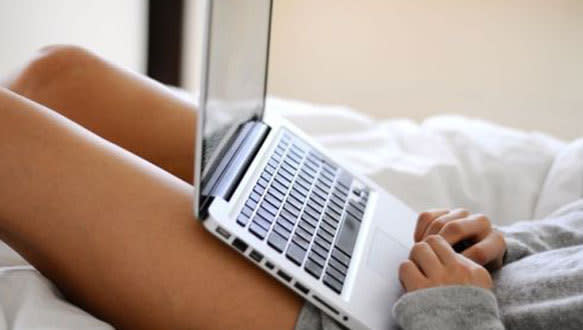Why Texting=Wrinkles: All About Modern Agers
You’re painfully familiar with the usual wrinkle-causing, age-revealing suspects like sun exposure, sugar-laden diets, and stress. But these days, a whole new slew of technology-related agers are threatening our youth. Earlier this year Charlotte’s Book reported on the dreaded texting turkey neck, and that’s just the beginning—call them the unusual suspects of aging: from squinting at small screens to phacne (you guessed it—acne from your bacteria-laden phone), the modern world presents a skin-damaging obstacle course for anyone with a smart phone or laptop. We asked Charlotte’s Book Dr. Paul Frank, a cosmetic dermatologist in Manhattan, to elaborate all things modern agers.
By Nina Melendez
MORE FROM CHARLOTTE’SBOOK.COM:
LED Light: Good enough for NASA, Great For Your Anti-Aging Routine
What’s the Difference Between Fine Lines and Wrinkles?
The Best Eye Creams For Fine Lines

TECH NECK: THE NEW AGE TURKEY NECK
Tech neck results from constantly holding your device low and down. According to Charlotte’s Book expert Dr. Paul Frank, “This can cause the collagen in your neck to break down and create an undesirable turkey-looking neck.”
RealSelf contributor Dr. Joel Schlessinger elaborates: “On average, people stare at their cell phones for almost three hours a day. It adds stress on the muscles and nerves, which can do damage over time.”
In an article released today on RealSelf, Dr. Schlessinger suggests holding your device slightly higher than normal to improve your posture. “The head normally weighs about 10 pounds when the spine is straight,” he explains. “However, when you’re holding your head at a 45-degree angle to look down at your phone, the head weighs about 49 pounds.” Just a slight change in elevation can make all the difference.
Dr. Frank echoes these sentiments, recommending we hold the phone at eye level, and adds a warning about neck exercising. Though tempting, exercising your neck runs the risk of creating more wrinkles. Instead of neck exercises, Dr. Frank recommends Teoxane, a topical serum. Teoxane is formulated with the same cross-linked hyaluronic acid used by physicians for injectibles, but it can be applied daily.
SQUINT LINES: TINY SCREENS MEAN MORE CROW’S FEET
The primary cause of crow’s feet used to be squinting from the sun—we’re still careful to wear Charlotte’s Book-approved sunglasses to solve this problem, but we haven’t found a set of sunglasses to prevent the newest cause of crow’s feet: squinting at tiny screens. “Squinting to read texts and emails can cause wrinkles to form around your eyes,” says Dr. Frank. To help the situation, increase the font and the brightness on your phone. If you do several hours of work from your hand-held device, imagine the lines you can avoid just by upping your font size! Dr. Frank’s fave product for squint lines? Chanel Sublimage eye cream.
PHACNE = PHONE ACNE
This term is actually included in the urban dictionary, and it’s used to describe acne you get from holding your cell phone against your cheek. The area from your temple to the chin is prone to break outs thanks to the plethora of germs living on your phone. Cleaning your phone screen is one option, Dr. Frank says, but he especially recommends cleaning your skin. “It’s important to exfoliate and balance oily skin, which can worsen the condition,” he says.
LET THERE BE LIGHT, NOT WRINKLES
RealSelf contributor Dr. Joel Schlessinger suggests your home lighting may tack on the years thanks to UV emissions from different types of light bulbs. To reduce your risk of exposure—which, depending on the light bulb, can equate to the same kind of exposure you’d get in direct sun—Dr. Schlessinger recommends LED and incandescent bulbs, because their lower UV emissions mean less risk of sun damage.
Some good news: lucky for the screen-addicted modern woman, the glow from your device has no known effects on skin. You’re more likely to age faster because of other hard-to-kick habits like drinking, sun-bathing, and carbo-loading.
